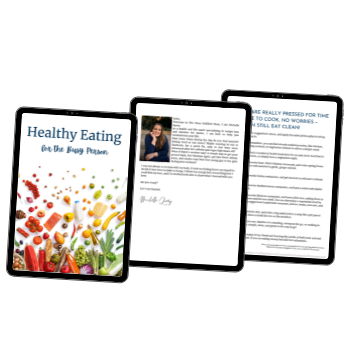Welcome to the Simple Steps to Improved Health Challenge Day 18 Know When to Say No
Reminder to choose 1 of the first two actions to work on this week starting today or whatever day you want the week to start on for you. See Day 1 for more information about the challenge.
How Does Knowing When to Say No Improve Health
When you say “yes” to things you do not want to do, it can cause a range of health issues.
The first is emotional health. When you are overcommitted you feel stress, anxiety, and irritation. These all lead to worry, resentment, and guilt. Big emotions that are not worked through lead to procrastination, fear, and negative self-talk. All these emotions can take you out of your creative self that can complete projects and solve problems.
When you have this chronic emotional stress, it can lead to physical symptoms.
One big physical symptom is chronic inflammation in your body. Your body is not able to do all the helpful, healing functions when there is constant inflammation. Chronic inflammation stops your body from going into the parasympathetic state in which it detoxes and heals the body. The body produces extra cortisol in this constant flight or fight state. All this can lead to adrenal fatigue and or weight gain.
Finally, it impacts mental health. When you are overcommitted you can not fully focus on the project or request. You are not committed to being present and activities may end up taking longer because of stress, worry, or multitasking.
How to Take Action to Know When to Say No
The best thing to do is listen to your intuition.
If you want to say “no” to a request, then say “no” or stop and think about the request before answering.
When it is a definite “YES” you are excited, know it, and should say yes if it fits in your schedule.
Often you do not know immediately that it is a yes or no. Then say you need time to think about it.
That can be for a minute or a few days depending on the request. It is important to be clear and give yourself a boundary on the decision with a timeline. You can say, “Let me think about it and get back to you in 10 minutes.” Or “I have to check my schedule and will get back to you in 2 days.”
Then take the time to think about the request.
Questions to Ask When Thinking About a Request
Does it meet your current goals and values? Is it something you will enjoy? Does it cause a conflict with other activities or family? Do you want to say no because you are scared to step out of your comfort zone? Are you over-committed already? Is there something you would need to let go of so that this can take its place? Do you want to do it?
Answer the Request
People answer requests in many different ways. Often it is without thinking about it with an accommodating “yes” or powerful “no.” Sometimes it is with a wishy-washy maybe or I’m not sure I can.
You want to be very clear when you answer so the person making the request knows if you are taking on the request or not.
Another thing that can happen with an answer is the dreaded “talk you into it.“
The “talk you into it,” is often based on guilt because you think you have no good reason to say no. When you clarify your no through asking questions then you have a strong why. It is your choice whether or not to tell the person that why.
“No.” Is an answer.
You are not required to give more. It can be helpful and clarifying for you to provide other information if you want.
You may already have commitments for that day. Do not forget – an appointment with yourself is a commitment. Maybe the event stops you from being home for dinner and you value dinner every night with your family.
“Think of me in the future.” Is another answer.
It could be something that you really want to do but the timing doesn’t work. You can always say yes to a future date and time. Maybe you are working on project A until next Wednesday and have space in your schedule after that to add in this request.
Emotions of the Decision
You are probably saying but I feel guilty when I say no. I understand, I have felt that way as well.
When you have a process to make your decision such as the questions, then you don’t need to bring in the emotions. You can tell the person you used a decision process. The person knows you really thought about it and will often move on.
There will still be some people trying to guilt you into saying yes to their request.
As long as you believe in your decision process, you can let their comments slide off you.
Reminder – You would feel just as guilty if you said yes and couldn’t participate wholeheartedly in the activity, event, or work. Either way, you may have guilt but in the “no” you have your time back.
Go Do it – Know When to Say No
1. Prevention is the best medicine. Right now take out a piece of paper or open a note on your phone and record the three most important goals in your life.
After that record the 3 things you value the most in your life. This is your decision matrix right now with the questions above.
If you get a request and it doesn’t help with any of your top 3 goals and meet your top 3 values, it is a no.
2. Next check if have space for this request in your calendar.
A request that meets your top 3 goals and values or is a definite yes goes to this step. Pull out your schedule and look to see if it fits in your life.
3. After you say yes, schedule it.
Put it on the calendar or in your planner or on your phone with a reminder so you are ready for it. This also blocks the time off for when that next request happens.
4. If you struggle with saying no, then practice it.
Read over some of the reasons you would say no. That may be your schedule or a project you are working on. Maybe it is a value about spending time with family.
Then practice in the mirror saying no a couple of different ways and feeling confident in your decision.
Remember you have permission to say no when you want to say no.









